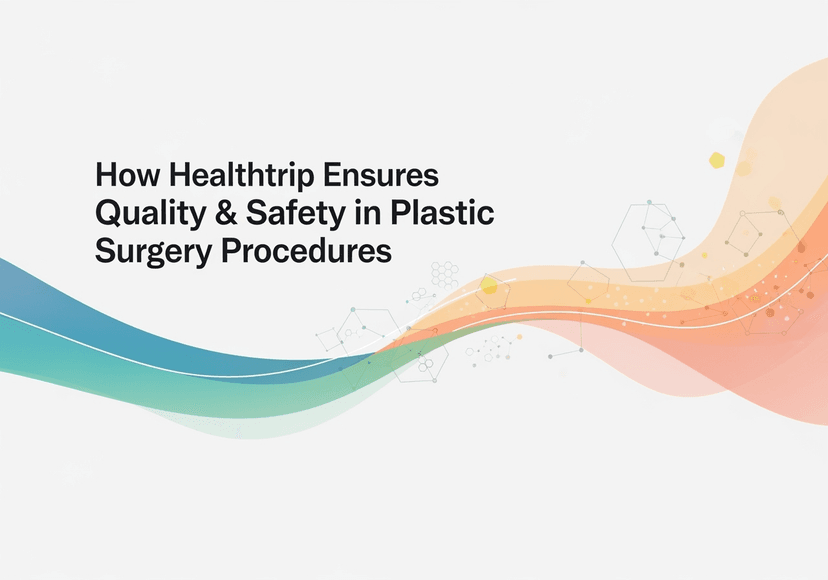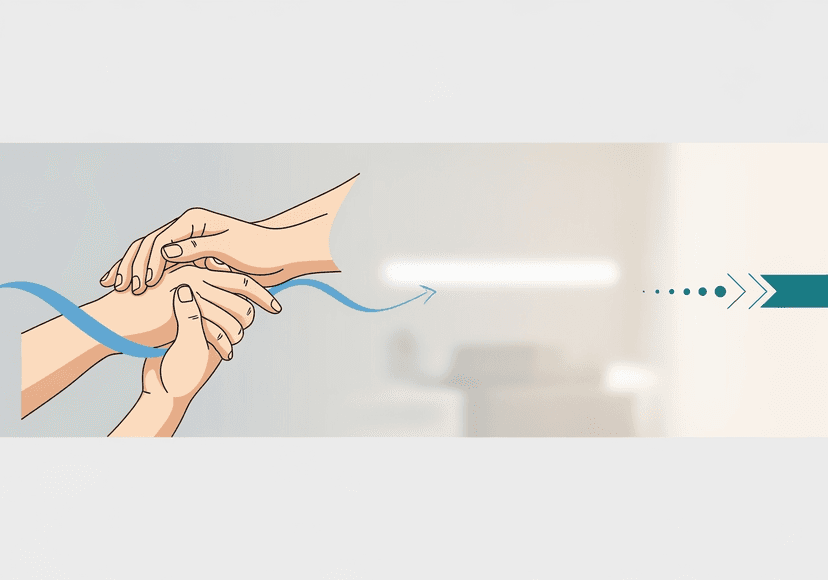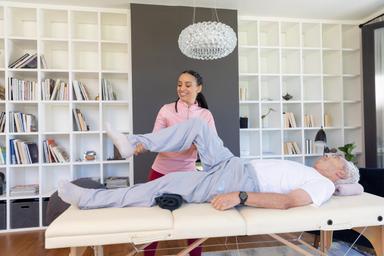
Rhinoplasty 101: Benefits, risks, and what to expect
10 Aug, 2023
 Healthtrip Team
Healthtrip TeamRhinoplasty, often colloquially referred to as a "nose job," stands at the intersection of art and medical science. As one of the most popular cosmetic surgeries worldwide, it promises not just an enhanced facial aesthetic but also functional improvements for many. Whether driven by a desire for a more harmonious facial profile or the need to address breathing challenges, individuals considering rhinoplasty are embarking on a transformative journey. This guide delves into the multifaceted world of rhinoplasty, shedding light on its benefits, potential risks, and what one can anticipate from the procedure.
Most popular procedures in India
Rhinoplasty
Rhinoplasty, derived from the Greek words "rhinos" (nose) and "plassein" (to shape), is a surgical procedure that modifies the structure and appearance of the nose. It is one of the most commonly performed cosmetic surgeries worldwide. Beyond its aesthetic applications, rhinoplasty can also serve functional purposes, addressing congenital defects, trauma-induced deformities, and respiratory impediments.
Wellness Treatments
Give yourself the time to relax
Lowest Prices Guaranteed!

Lowest Prices Guaranteed!
Originating in ancient India, rhinoplasty techniques were detailed in the Sushruta Samhita for reconstructing noses amputated as punishment. The procedure evolved over centuries, with significant advancements in the 20th century. Modern rhinoplasty, equipped with advanced surgical tools and a deeper understanding of nasal anatomy, prioritizes both aesthetic and functional outcomes.
Types of rhinoplasty
1. Open rhinoplasty:
This approach involves an external incision made on the columella, the narrow strip of tissue that separates the nostrils. The skin is then lifted off the nasal structures, providing the surgeon with a direct view of the underlying anatomy. This method offers greater precision, especially for more complex procedures. However, it may result in a small, albeit usually inconspicuous, scar on the columella.
2. Closed rhinoplasty:
In a closed rhinoplasty, all incisions are made within the nostrils, ensuring that there are no visible external scars post-operatively. The surgeon works through these internal incisions to reshape the nose. This technique is often preferred for less extensive modifications and when the primary concerns are limited to the bridge or tip of the nose.
3. Revision rhinoplasty:
Also known as secondary rhinoplasty, this procedure is performed to address and correct issues or complications that arose from a previous rhinoplasty. Whether due to aesthetic dissatisfaction or functional problems, revision rhinoplasty can be more challenging than primary rhinoplasty, given the altered nasal anatomy and the presence of scar tissue.
4. Filler rhinoplasty:
A non-surgical alternative to traditional rhinoplasty, filler rhinoplasty involves the use of injectable dermal fillers to modify the nose's shape. It can be used to smooth out minor bumps, refine the nasal tip, or elevate a depressed bridge. The results are temporary, typically lasting several months to a couple of years, depending on the filler used.
Reasons for undergoing rhinoplasty
1. Cosmetic reasons:
One of the primary motivations for seeking rhinoplasty is to enhance facial aesthetics. Individuals may desire changes to the nose's size, shape, or angle to achieve a more harmonious balance with other facial features. This can include refining the nasal tip, narrowing the nostrils, or straightening the bridge.
2. Functional reasons:
Beyond aesthetics, many undergo rhinoplasty to address functional issues. This can encompass correcting congenital defects like a deviated septum, which can impede breathing. Rhinoplasty can alleviate such obstructions, leading to improved respiratory function and overall comfort.
3. Reconstruction:
In cases of trauma, such as accidents or injuries, or after surgical removal due to conditions like cancer, the nose may require reconstruction. Rhinoplasty in this context aims to restore both the appearance and functionality of the nose, helping individuals regain a sense of normalcy.
Pre-operative considerations
1. Consultation with a plastic surgeon:
The first step in the rhinoplasty journey involves a thorough consultation with a board-certified plastic surgeon. This meeting allows patients to discuss their concerns, desires, and goals for the surgery.
2. Medical history and physical examination:
A comprehensive review of the patient's medical history is essential to identify any potential risks or contraindications. The surgeon will also conduct a physical examination of the nose, assessing its structure, skin quality, and relation to other facial features.
3. Imaging and morphing:
Modern clinics often employ imaging software that can manipulate photos of the patient's nose to provide a visual representation of potential surgical outcomes. This tool aids in setting clear and realistic expectations for both the surgeon and the patient.
4. Setting realistic expectations:
It's crucial for patients to understand that while rhinoplasty can bring significant improvements, perfection is not a realistic goal. The surgeon will guide the patient in understanding the potential results, ensuring they have a grounded perspective on the surgery's outcome.
Procedure steps for rhinoplasty
1. Anesthesia:
Ensuring the patient's comfort and safety is paramount. Depending on the complexity of the procedure and the patient's preference, either local anesthesia (with sedation) or general anesthesia will be administered. Local anesthesia numbs the nose and surrounding area, while the patient remains conscious but relaxed. General anesthesia induces a deep sleep, ensuring the patient is unaware and feels no pain during the surgery.
2. Incisions:
The nature and location of the incisions depend on the specific type of rhinoplasty being performed. In an open rhinoplasty, an external incision is made on the columella, while in a closed rhinoplasty, incisions are made inside the nostrils. These incisions provide the surgeon with access to the underlying nasal structures.
3. Reshaping:
Once the incisions are made, the surgeon will proceed to reshape the nose. This can involve:
- Removing Bone or Cartilage: For patients seeking a reduction in their nose's size or a removal of a hump.
- Adding Bone or Cartilage: For those looking to augment certain areas, grafts might be taken from the patient's septum, ear, or ribs. In some cases, synthetic materials might also be used.
4. Closing the Incisions:
After the desired reshaping is achieved, the surgeon will redrape the nasal skin and tissue over the newly modified structure. The incisions are then meticulously sutured to ensure minimal scarring. In the case of an open rhinoplasty, stitches may be placed on the columella, while a closed rhinoplasty will have all stitches inside the nostrils.
5. Recovery:
Post-operative care is crucial for optimal results and includes:
- Initial Healing Phase: Patients might experience swelling, bruising, and discomfort in the first few days. They'll typically wear a nasal splint for the first week to support the new shape as it begins to set. Breathing might be challenging due to internal swelling, but this improves over time.
- Long-term Care: Over the next few months, the nose will continue to refine and settle into its new shape. It's essential to avoid strenuous activities, protect the nose from potential injuries, and follow all surgeon's post-operative instructions.
Post-operative care after rhinoplasty
1. Immediate Aftercare:
The initial days following surgery are crucial for ensuring a smooth recovery and optimal results.
- Dressings: After the procedure, the surgeon will place dressings inside the nostrils to support the new structures and absorb any drainage. These dressings are typically removed within a few days.
- Splints: A nasal splint or cast is often applied to the outside of the nose. This helps maintain the new shape, reduce swelling, and protect the surgical site from accidental bumps. It's usually worn for about a week.
- Follow-up Appointments: Regular check-ins with the surgeon are essential. The first post-operative visit is typically within a week to assess healing, remove dressings, and address any concerns. Subsequent visits will monitor the nose's long-term healing and results.
2. Potential Side Effects:
As with any surgical procedure, rhinoplasty comes with potential side effects, most of which are temporary.
- Swelling: This is the most common side effect and can affect both the nose and surrounding facial areas. While major swelling subsides within a few weeks, minor swelling can persist for several months.
- Bruising: Bruises, especially around the eyes, are common but fade within a couple of weeks.
- Pain: Some discomfort is expected, but it's usually manageable with over-the-counter pain relievers or medications prescribed by the surgeon.
- Numbness: The tip of the nose or areas around the incisions might feel numb initially. Sensation typically returns over time.
3. Long-term Care:
Ensuring the longevity and success of the rhinoplasty results requires ongoing care.
- Protecting the Nose: Especially in the first few months, it's crucial to shield the nose from potential injuries. This includes avoiding contact sports and being cautious with activities like putting on glasses.
- Avoiding Certain Activities: Activities that can increase blood pressure to the face, like heavy lifting or vigorous exercise, should be avoided for several weeks. It's also advisable to refrain from excessive facial expressions and sun exposure.
- Monitoring for Complications: While rare, complications like infections, breathing difficulties, or unsatisfactory aesthetic results can occur. Regular check-ins with the surgeon and prompt attention to any concerns are essential.
Risks and complications of rhinoplasty
Like all surgical procedures, rhinoplasty carries inherent risks. While a majority of patients undergo the procedure without significant complications, it's essential to be informed about potential adverse outcomes.
1. Infection:
Though rare, postoperative infections can occur. Symptoms might include increased redness, swelling, pain, or discharge from the incision sites. If detected early, infections are typically treatable with antibiotics. However, severe infections might require additional surgical intervention.
2. Poor Wound Healing or Scarring:
While surgical techniques aim to minimize visible scarring, some patients might experience delayed wound healing or more noticeable scars. Factors like genetics, skin type, and postoperative care can influence scarring. In some cases, treatments like scar creams or laser therapy can help improve the appearance of scars.
3. Difficulty Breathing:
Rhinoplasty, especially when addressing functional issues, aims to improve breathing. However, there's a risk of post-operative internal swelling or structural changes that can temporarily or, in rare cases, permanently impede airflow. Such complications might necessitate further medical or surgical intervention.
4. Unsatisfactory Appearance:
Despite meticulous planning and execution, some patients might be dissatisfied with their post-operative appearance. This could be due to asymmetry, undesired shape changes, or unmet expectations. Communication with the surgeon before the procedure is crucial to align expectations with achievable results.
5. Need for Revision Surgery:
Related to unsatisfactory appearance or other complications, some patients might require a secondary or revision rhinoplasty. Revision procedures can be more complex due to the presence of scar tissue and altered nasal structures. It's essential to wait until the nose has fully healed, typically a year or more, before considering revision surgery.
Benefits of rhinoplasty
Rhinoplasty, while primarily known as a cosmetic procedure, offers a range of benefits that can significantly impact an individual's quality of life, both physically and emotionally.
1. Enhanced Facial Symmetry:
The nose, given its central location, plays a pivotal role in defining facial balance and harmony. Rhinoplasty can address various aesthetic concerns, such as a bulbous tip, wide nostrils, or a pronounced hump, to create a more symmetrical and proportionate facial appearance. By refining the nose's shape and size, it can complement other facial features, leading to a more balanced and harmonious look.
2. Improved Self-confidence and Self-esteem:
The psychological and emotional benefits of rhinoplasty are profound. For many, the nose is a source of self-consciousness or dissatisfaction. By aligning the nose's appearance with an individual's desired look, rhinoplasty can significantly boost self-confidence and self-esteem. This newfound confidence can positively impact various life aspects, from social interactions to career opportunities, allowing individuals to present themselves without the shadow of insecurity.
3. Better Breathing Function:
Beyond the aesthetic enhancements, rhinoplasty can also address functional issues. Conditions like a deviated septum, narrow nostrils, or other structural abnormalities can impede airflow and cause breathing difficulties. Through rhinoplasty, these issues can be corrected, leading to improved respiratory function. For many, this translates to better sleep, increased exercise capacity, and an overall enhanced quality of life.
In essence, rhinoplasty is not just about reshaping the nose but reshaping one's experiences and interactions with the world. It stands testament to the intricate interplay between physical form and psychological well-being, highlighting the profound ways in which medical interventions can enhance human experience.
Related Blogs

How Healthtrip Ensures Quality & Safety in Plastic Surgery Procedures
Detailed guide on plastic surgery, featuring doctors, hospitals, risks, recovery,

End-to-End Logistics for Plastic Surgery with Healthtrip's Support
Detailed guide on plastic surgery, featuring doctors, hospitals, risks, recovery,

Healthtrip's Care Coordinators: Your Support During Plastic Surgery
Detailed guide on plastic surgery, featuring doctors, hospitals, risks, recovery,

Top 5 Indian Hospitals for Plastic Surgery
Detailed guide on plastic surgery, featuring doctors, hospitals, risks, recovery,

Post-Plastic Surgery Diet and Lifestyle Tips
Detailed guide on plastic surgery, featuring doctors, hospitals, risks, recovery,

Common Risks in Plastic Surgery and How Healthtrip Manages Them
Detailed guide on plastic surgery, featuring doctors, hospitals, risks, recovery,










